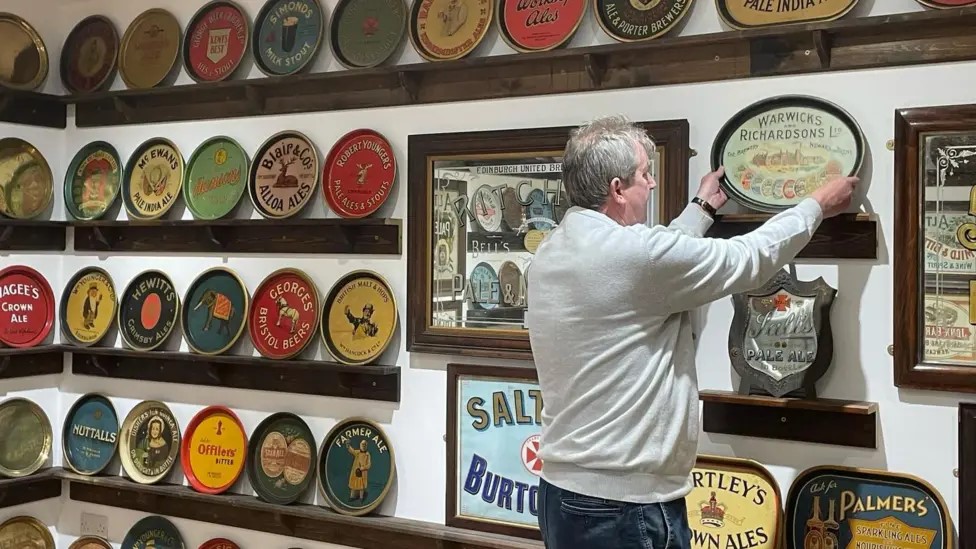1. Chairman’s Statement
In the last Newsletter we briefly mentioned the passing of Les Hutcheon. Les was not only a life member of the SBAA but also an enthusiastic committee member and provided great support to the Scottish Brewing Archive for over 20 years.
Les was also a good friend to myself and gave me some great advice over the years. Please read his obituary for further information on his life.
The SBAA committee are thinking of a suitable way of honouring his contributions over the years. If you have any ideas on how we can achieve this, please get in touch.
Many thanks to all who provided articles for this Newsletter, please keep it going. I would also like to thank John Reade for providing a transcript of the letters to John Jeffrey that appeared in the January Newsletter. These letters along with the transcript will be passed to the Scottish Brewing Archive.
Last year we mentioned that the Caledonian Brewery was to close. To ensure we don’t forget its place in Scottish brewing industry for over 150 years and its history, I have written an article for this years Journal. After completing the article, I learned that Russell Sharp had died. Russell along with Dan Kane led a management buy out of Caledonian Brewery after Usher Vaux had announced its closure. Russell was also responsible for the formation of Innis & Gunn, now run by his two sons, Neil and Dougal. Another passing of a brewing stalwart and will be missed by all who knew him.
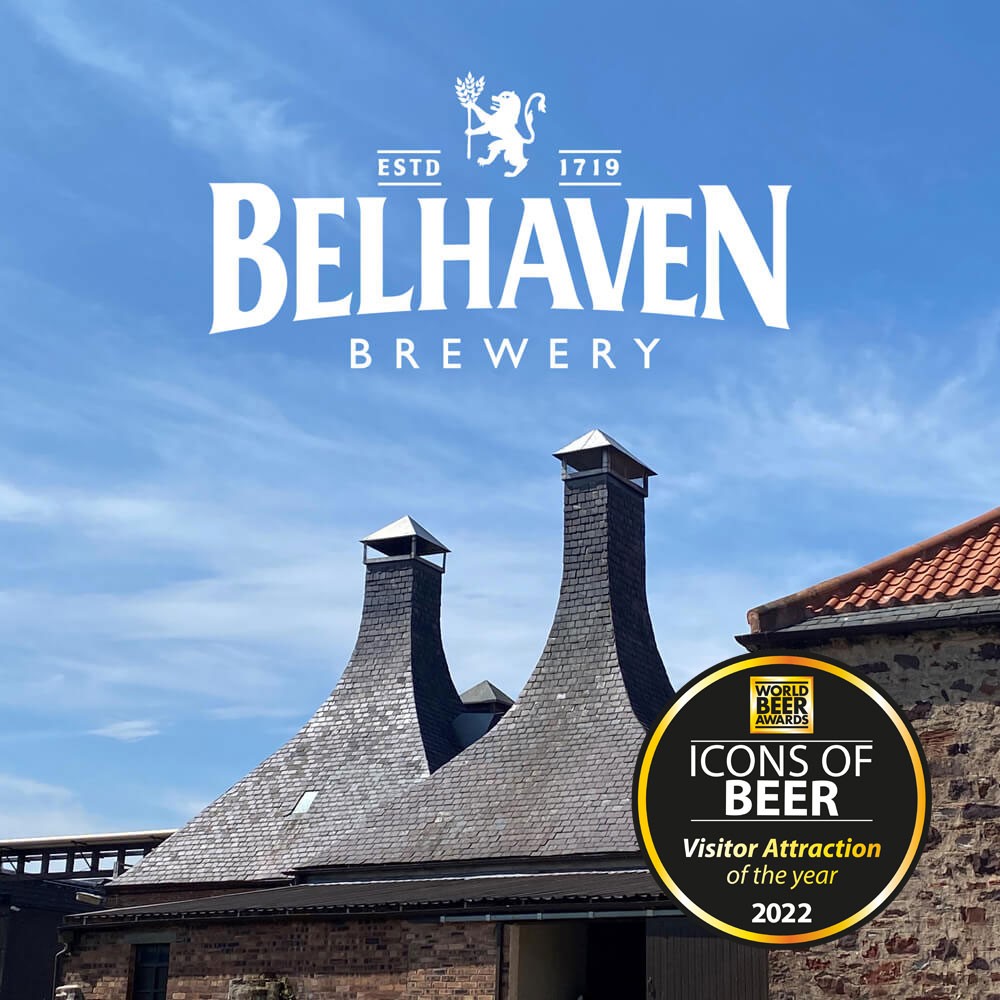
Finally, a warm welcome to our new members.
John Martin
2. Les Hutcheon – Obituary
A celebration of the life of Les Hutcheon
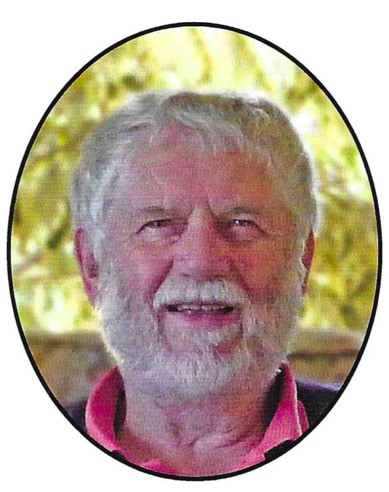
Les’s Biochemistry qualification greatly helped when he trained to be a maltster and then as a brewer. Les moved to the Tyne Brewery in Newcastle in 1969, where he worked for 14 years, firstly as a project Brewer and then as Production Manager Brewing (Head Brewer); a milestone in his career.
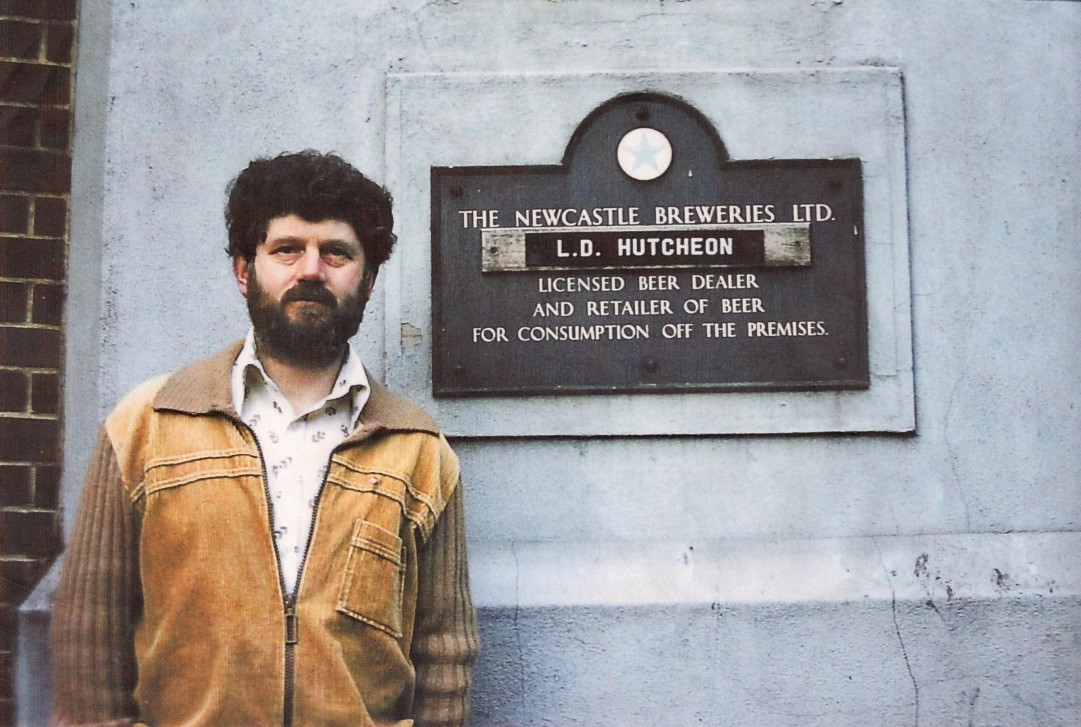
A few years before his retirement, Les joined the Scottish Brewing Archive (SBA), representing S&N as a committee member. During these early years, Les was instrumental in depositing valuable brewing records and artefacts that included bottles, cans, books and beer production records. These included details of the Majority Ales (see Newsletter No 45) and the last brew book from Holyrood Brewery when it closed in 1986 (see Annual Journal 2021).
During his time with the SBA, Les was appointed as Vice President, where he struck up a good friendship with the late Harvey Milne. Les wrote several articles for the SBA and used the nom de plume of Sam P.L.E. Cran (cran is a Scots word for a tap that allowed beer samples to be taken from beer vessels for analysis purposes).
Les was a quiet, unassuming man with a dry sense of humour. He had a great passion for beer, hill walking, cycling, rugby and of course his family. In his youth, he would cycle and climb a few Munro’s all over Scotland with friends, ending with a pub visit to quench their thirst. In his retirement, he would watch the Tour de France and rugby internationals on TV, when he would cheer on Scotland.
For his services as a committee member to the SBA for 20 years, he was distinguished as a Life Member, an honour only given to a select few.
The SBAA will not forget Les and his valued contribution over many years. Thank you Les.
Our thoughts are with Les’ wife Anne and family.
3. Letters to John Jeffery & Co. 1865-1872 – Summary
In the January Newsletter No54 we featured an article covering five unseen letters sent to John Jeffery & Co. during the 19th Century and asked if anyone in the membership would be willing to transcribe the handwriting of the time into easily readable text before we pass the documents to the Scottish Brewing Archive at Glasgow University. Well , member John Reade took up the challenge and forwarded the typed copies. Although the contents mainly relate to shipping and financial transactions they serve as and interesting insight to the extent of the international business. John has gone further and provided the article below. Its amazing to see the prominence of Scottish beers in the adverts , particularly when you realise that New Orleans and Charleston were being ravished by the American Civil War around that time. Over to John.
The five letters from agencies around the world to Jeffrey’s Heriot Brewery, Edinburgh, dated between 1865 and 1872, as mentioned in the last newsletter have now been transcribed and passed with the originals to The Brewing Archive.
The letters emanating from agents in Venezuela, Manila, New Orleans, Trinidad and Singapore give an interesting picture of the extent of the growing export trade at that time for not only Jeffrey’s beers but also other Scottish Brewers.
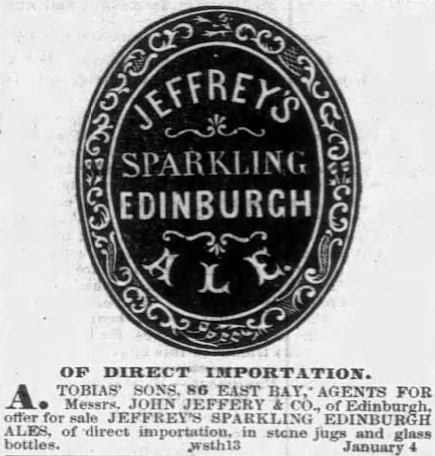
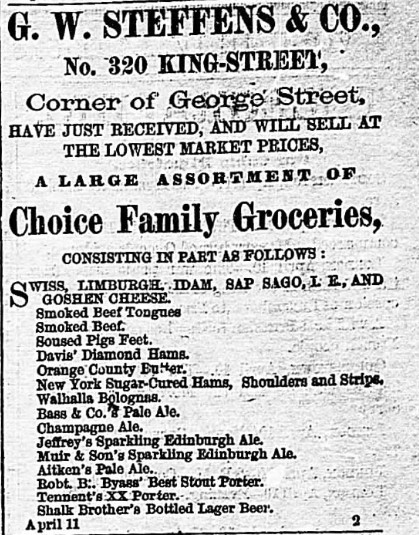
Although Jeffrey’s Roseburn Maltings were completed in 1866 all brewing was still carried out at that time, both for export and home trade, at their Grassmarket Heriot Brewery which had two coppers each of 150 barrels capacity. However, whilst the Porter was stored in large vaults beneath the Grassmarket brewery all the ale was despatched for storage and distribution from Roseburn (see Charles McMaster: John Jeffreys & Company Ltd – SBA Newsletter15 1989).
If one was inclined to do so, as each of the letters give details of the ships that transported the beer then they can be traced via the Lloyds of London online shipping registers. Likewise, the types of ale transported can be identified not only in some of the letters themselves but also via the various online newspaper archives. For example, the 1867 letter from John Jeffrey’s agent, John Turpin, talks about the difficulty in business at that time being “dull” and that he only wanted to receive supplies of Sparkling Ale in quart bottles.

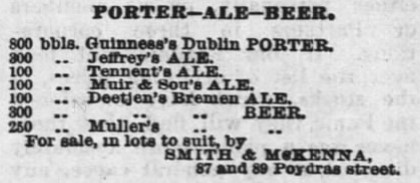
In 1871 Jeffrey’s Singapore agents reported that “the ale in quarts are making satisfactory progress – we got the purchasers of the pints to take some 20 casks of quarts as well”. It’s interesting to note in some instances that the beer is offered in quart and pint bottles and jugs whilst in others they refer to casks but also sometimes mention them in quarts and pints. Presumably, in some instances the ales were transported in bulk 9gal casks) to then be bottled at the point of arrival whilst in other cases they were bottled in Edinburgh and then shipped across? The following two adverts demonstrate each of these scenarios.

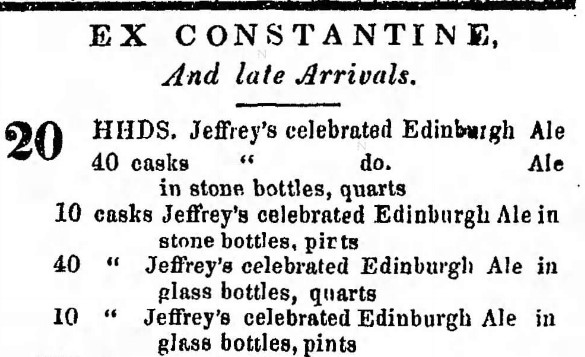
John Reade 22nd February 2023
4. William Gray & Son of Broughty Ferry and Dundee Brewery Questions ? ? ?
By Paul Hathaway
A keen interest in the history of pubs, beer and breweries, together with a love of old maps and trade directories, all combine well to make a visit somewhere more of an exploration rather than a visit. Living on Islay, I don’t often get the chance to make such a tour but when I do, I try to make the most of it.
Recently, I had the opportunity to visit Broughty Ferry. Having made contact with the local CAMRA branch, I set about planning the things of interest I would like to find.
My first thoughts are of closed breweries so looking at the Brewery History Society (BHS) latest publication, “Brewers of the British Isles 1890 to 2031”, I found that there was brewery, William Gray and Son, situated at 58-60 Fort Street in the town. Looking at the entry in the book, it showed “William Gray & Son,58-62 Fort Street (1910) Trading 1882. Proprietor Baxter Gray died December 1912. Continued by Fred Gregory, possibly to 1926. Buildings demolished 1970s.”
The next step was to look at Trade Directories which can be done online at the National Library for Scotland website (https://digital.nls.uk/directories/ and archive.org). Though not all directories are available, a good number are and it is possible to track establishments through time. The directories include the Post Office, Pigots, Slaters and Worrals.
One drawback of these directories is that detail is lacking, for example in the 1846 Post Office Guide to Dundee, William Gray is listed in Fort Street just as a brewer. It lists the Principal Inhabitants of Broughty Ferry in alphabetical order so tying a business to a particular establishment can be difficult. Incidentally, the 1846 Directory lists one “Alex Annandale, late Brewer, Long Lane” and “James Wilkie, late Brewer, Gray Street”. Any information on these two folks would be welcome.
By 1850, William Gray remains listed as “brewer, Fort Street” but there are by now a few references to specific inns, taverns and hotels: John Clark, Victoria Hotel, Victoria Buildings, but no address, Mrs Miller of the Royal Arch Tavern, Brook Street and John Jolly of Jolly’s Hotel in Gray Street.
The 1864-1865 Directory lists several establishments but interestingly does not list William Gray or the brewery. This edition also lists a Mrs Gibson as having the Temperance Hotel, King Street. By 1871, the Brewery is noted again but as “William Gray, Brewer & Wine Merchant & Son, Fort Street”, the first mention I can find of the Son. The Temperance Hotel is not listed but by 1876-1877, it is listed again, this time under the management of Mrs Norrie. William Gray reverts to “William Gray, brewer and spirit merchant, Fort Street”. The Worrals Directory of Nort East Scotland of the same year does not show the Brewery but does list some establishments: the Prince of Wales (closed or unidentified), Broughty Tavern (closed), Fishermans (now the Fishermans Tavern and Hotel), Eagle Inn (now the Eagle Coaching Inn), The Ship (still trading) and the Freemasons (closed or unidentified).
The Worrals Directory also lists the following Dundee Breweries: Ballingall & Sons, Pleasance Brewery, Lochee Road, Henderson John, 17 Constable Street, Webster A. & Son, 2 Lyon Street, Whitton James, 32 1/2 King Street and Wills Margaret, 51 Dudhope Street.
The Post Office Guide 1882-1883 describes William Gray as “Gray, Wm., & Son, brewers and wine merchants, 54, 58 and 60 Fort Street”. It also lists “Gray, Baxter, of Wm Gray & Son, Springbank, Hill Street”. This would be the Family member that passed away in 1912.
The 1906 Directory refers to “Gray, William, & Son, 54 to 60 Fort Street”. The 1912 Dundee Directory introduces a new resident to Broughty Ferry in the shape of “Brown, W. H. (Brewer Dundee), Cuba Cottage West Ferry”. This would be he of William Halley Brown, Craigie Brewery, Lyon Street, Dundee, possibly a successor to A Webster & Son, 2 Lyon Street above. Any information again will be welcomed. Also mentioned is “Whittet, Thomas Younger, Brewer, Long Lane”. I can’t establish where he may have worked but the name Younger could be a clue but I have not been able to find any close location of a William Youngers Brewery. So, the mystery remains, unless of course, you know different. I did wonder if the name might have been “Whitton” as M & M Whitton are listed in the BHS book as at 32½, King Street Brewery, possibly as in the 1912 listing above?
The 1912 Directory also marks the first appearance of Fred. S. Gregory, listed as a wine and spirit merchant of 79 and 81 King Street and also on Lawrence Street, which may be the Gunners Bar of today. Baxter Gray remains resident at Springbank and the Brewery is listed as “Gray, Wm., & Son, wine and spirit merchants 52, 54, 58 and 60 Fort Street”. Baxter Gray died in 1912 and as Fred Gregory is listed as having an interest in the Brewery, I wonder if he did indeed take the business over?
By 1920-1921 William Gray & Son is listed as a wine merchant at 60 Fort Street and at 56 Fort Street. Fred Gregory is also listed as a wine merchant. This again suggests that he may have taken over the brewery but there appears to be no mention of brewing there. By 1926, it also shown that the Brewery was being used as a bottling plant as it is listed under Beer Bottlers. Also listed is “Bernard, T. & J., Ltd, Edinburgh, agent, F. S. Gregory, 56 Fort Street, Broughty Ferry”. So, did Fred Gregory take over the business of William Gray which was subsequently brought over by T & J Bernard and used for bottling with brewing ceasing? The 1930-1931 Directory still shows that the 1926 situation had not changed. However, the Directory lists the following Brewers: Ballingall & Son, Ltd., Park and Pleasance Breweries, Lochee Road and Bernard F. & J., Ltd.; agent, F. S Gregory, 56 Fort Street Brougthy Ferry, Usher, Thomas, & Son, Ltd.; agent, Andrew Dunn, 160 Nethergate, Whitbread & Co., Ltd., 3 Candle Lane and Younger, William, & Co., Ltd. 39 Dock Street.
By 1939, all reference to William Gray and Fred Gregory had disappeared, and the agency had moved to “Bernard T.& J. agent, W. G. Baker, 3 Caenlochan Road”. Other Brewers listed are:
Ballingall and Sons Ltd., Park and Pleasance Breweries, Lochee Road, West Ferry, Usher, Thomas & Son Ltd., agent. And. Dunn, 160 Nethergate, Whitbread & Co., Ltd., 3 Candle Lane and Younger, William and Co. Ltd., 39 Dock Street. Ballingall and Sons and W H Brown are listed as beer bottlers.
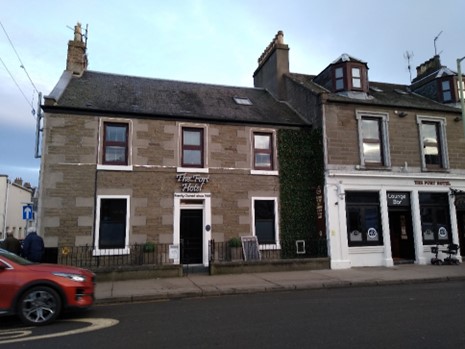
Moving to the map side of research there were two maps which I used. The first, Forfarshire Liv 8, OS 25”:mile surveyed 1857-1858 and published in 1859 shows the Brewery as quite a large building. Also shown are the Victoria Hotel, opposite the station and a Temperance Hotel located in King Street which appears to be opposite the Eagle Inn, which itself is next to the Brewery, though not marked. The only pub shown in the Pilot Tavern, which may or may not be today’s Ship Inn. The name is shown against the building next door to the Ship Inn so I can’t be sure if it is a rename or a different pub. The 1864 directory also lists the Life Boat Tavern, which would make sense as there is a Lifeboat Station opposite the Ship Inn. So again, is this a name change or a separate building? The second, the OS map of 1901 shows a lot more public houses, but none are named though some are identifiable by location and address. Some are closed, eg the Broughty Arms, now a take away. The site of the William Gray Brewery is now occupied by the Fort Hotel, pictured above.
The local CAMRA chaps confirmed that the Royal Arch was the Railway Tavern but I am wondering if they may have at one time been next to each other as each of them are listed as individual entries in various 19th century Directories but today’s building is on the corner of Gray Street and Brook Street so it is quite possible that today’s Royal Arch is a joining of the two establishments.
Further research on Dundee Breweries revealed some names that I couldn’t find in the BHS book; an 1809 Directory lists a Pullar & Co of Chapelshade Brewery. Also mentioned are William Bayne and Robert Mackie as being associated with that Brewery. Were these two separate enterprises?
The 1818 Directory lists the Pleasence Brewery but the BHS book shows this as being under Ballingall & Sons, though the Directory does list the Brewery, not under Breweries but under Public Works & Offices! James Montgomery and James Ross are also listed under Pleasance Brewery, not Pullar & Co. Was the business sold on?
The 1846 Directory also lists Alexander Leslie & Co of Mathews Close, 31 Overgate. I haven’t yet been able to find out anything more about this business, but enquiries are continuing.
If anyone can shed any further light on any of the above, please email me at thepubwright@btinternet.com
Detail from Forfarshire LIV Ordnance Survey Map 25”:mile surveyed !857-1858 and published 1859, and reproduced with the permission of the National Library of Scotland. It locates the Brewery in Fort Street, The Pilot Tavern, The Victoria Hotel and the Temperance Hotel, as mentioned in the text.
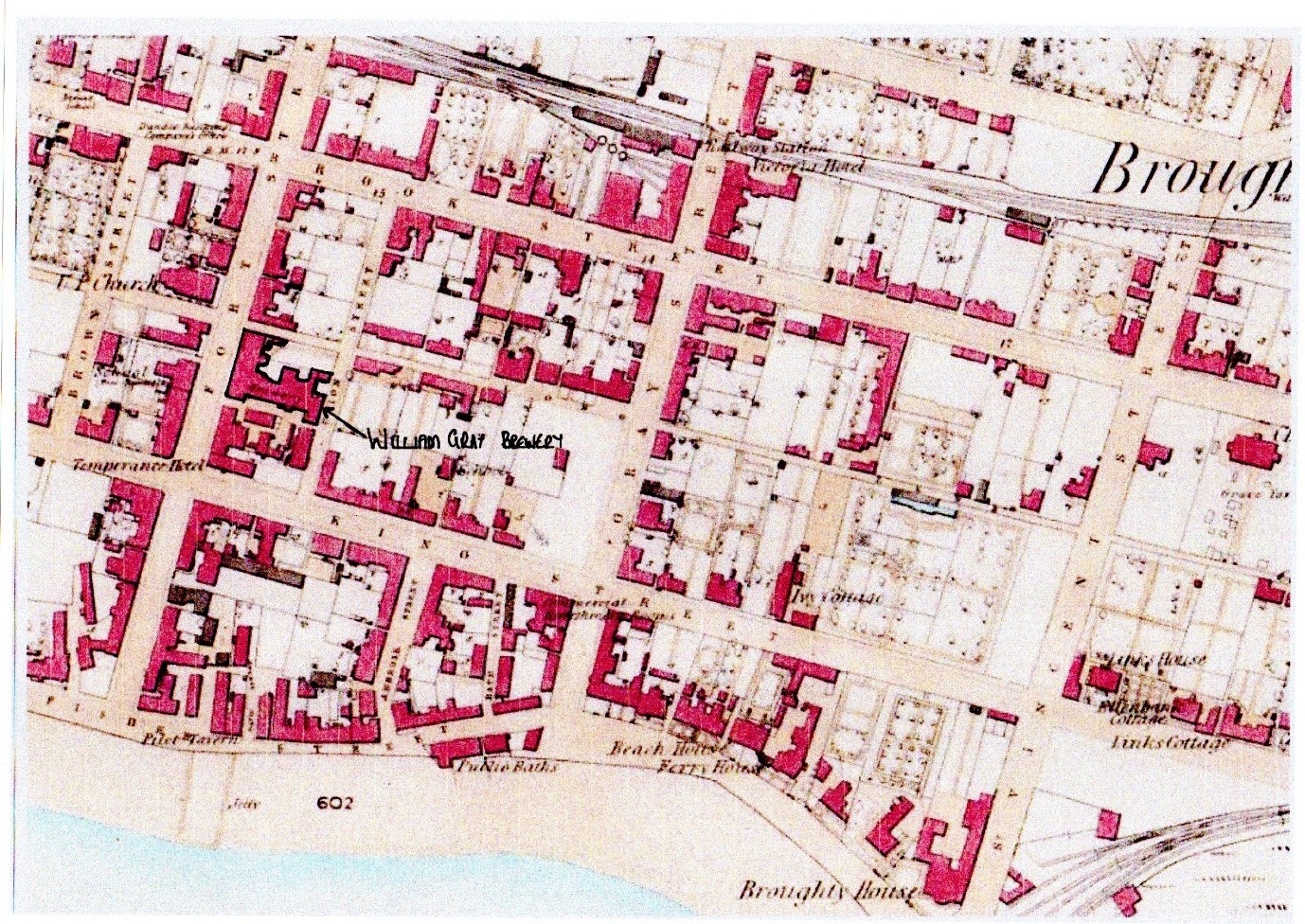
5. Tennent’s bottle stoppers
The SBAA have received three separate enquires over the last year or so, regarding finds of Tennent’s bottle stoppers all found on Scotland beaches.
The first one was found on North Uist in the Outer Hebrides and made of ceramic however the metal clip is missing that kept the stopper in place. This form of stopper was patented in the later period of the 19th century and used by Tennent’s during 1900-1930s.
The second find is a screw top bottle stopper found on a beach in Argyll and is made of vulcanite which became popular towards the end of the 19th century and was still in use in some drink industries until the 1960s. It is thought this particular one is dated during the 1920-30s.
The third find also made of ceramic was found on a beach at Fort William and this time has lager printed on the top. Tennent’s Lager was firstly brewed in 1885 and is still a popular brand today throughout Scotland.
Many thanks to all who found these beer bottle stoppers and for contacting the SBAA to seek information and to find out their age. Thanks to Ivor, the SBAA were able to provide additional data to the people who made these discoveries.
To find out further information you could visit The Tennent’s Story exhibition which is adjacent to the Wellpark Brewery in Glasgow.
So next time you are walking along a beach, keep your eyes peeled, you never know what you might find.
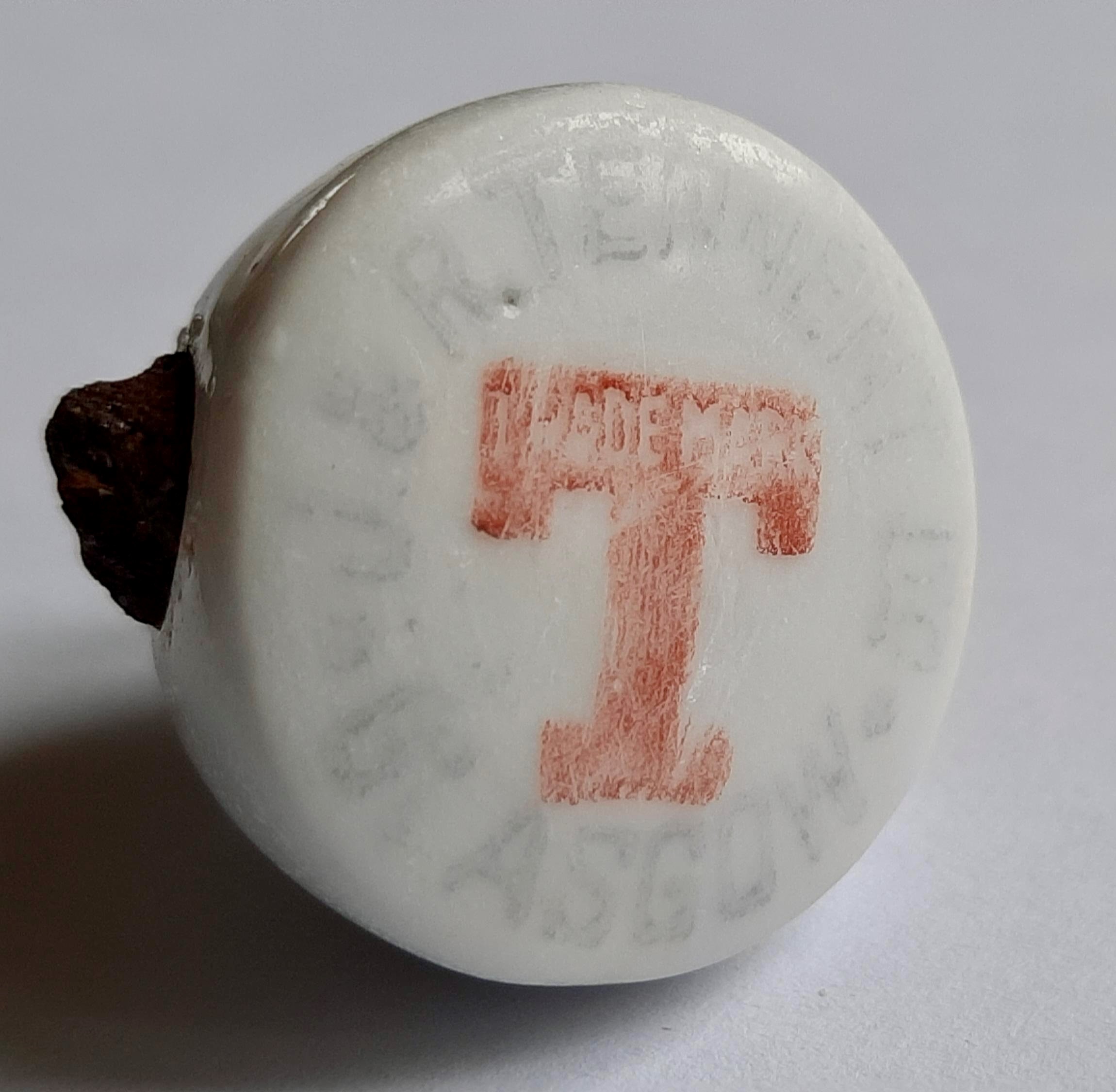
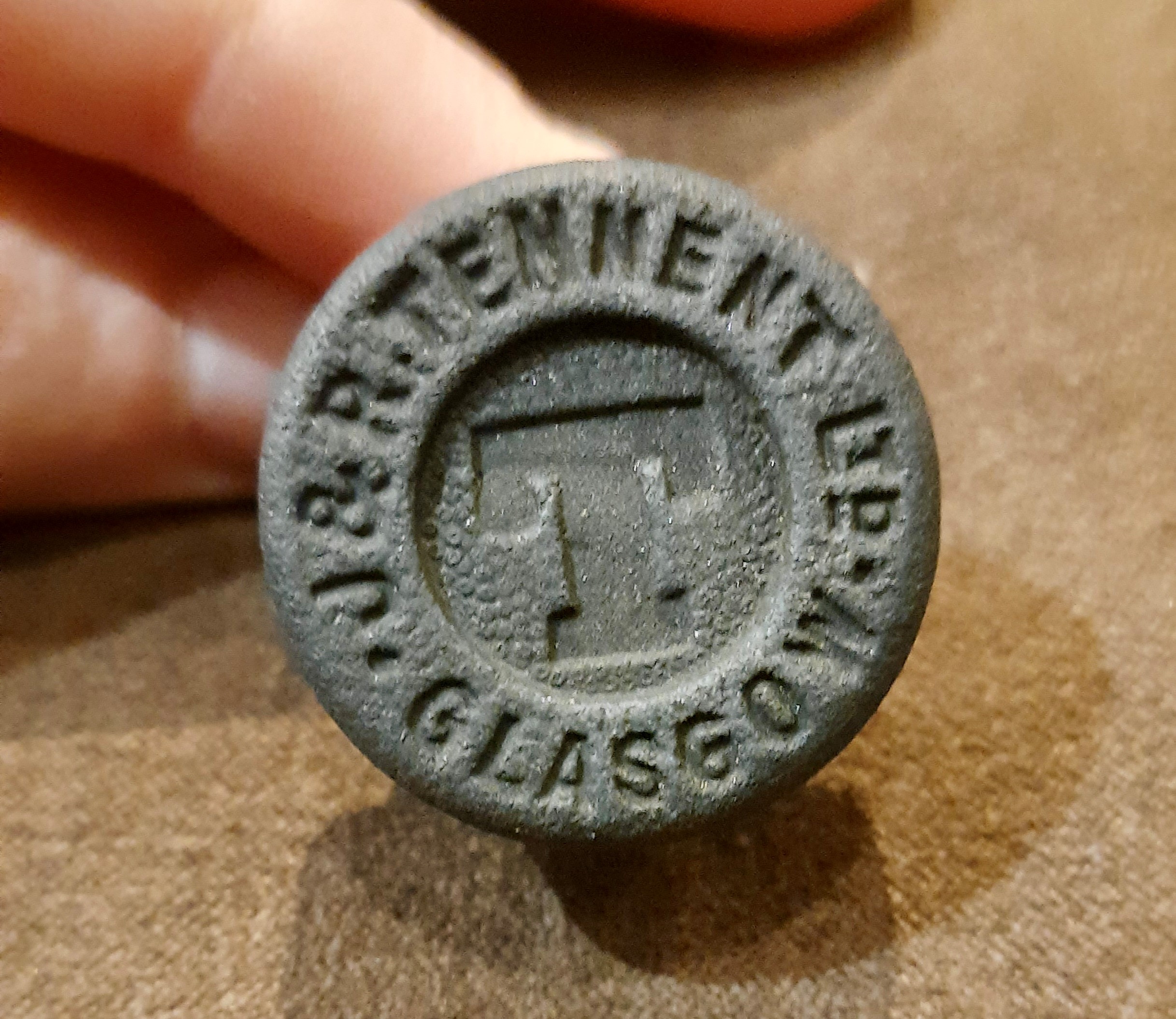
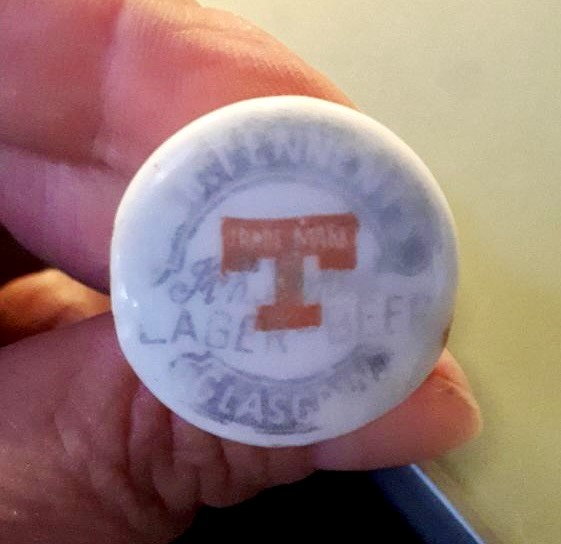
6. Analysis of 1884 Scottish Beer bottle
Recently I was privileged to be given access to some personal files belonging to the late former SBAA Chairman David I. H. Johnstone. One of the first documents in the file was a laboratory report regarding the analysis of a bottle recovered from the wreck of S.V.Girvan which hit a rock and sank of the coast of County Antrim 5th July 1884 on route to Melbourne. The cargo included bottles of beer from Wellpark Brewery Glasgow and cases of Scottish and Irish Whiskey. The analysis and report was compiled one Ivor T. Reid at Wellpark Brewery 30th December 1982 and reads as follows:-
Analysis of Contents :-
| Original Gravity | 1054.1 |
| Present Gravity | 999.3 |
| Alcohol % Volume | 7.2% |
| Colour EBC | 13.0 – see note |
| Bitters EBC BU | 32.0 |
| pH | 3.46 |
| Haze EBC | 4.05 |
| CO2 vols. | 0.75 |
| Chloride p.p.m. | 900 |
| Volume Liquid mls. | 680 |
Visual Description :-
The beer poured giving a small unstable head, the beer itself was light brown in colour containing a heavy cast with particles and sediment.
Flavour and Aroma :-
The beer had a pungent winey/phenolic aroma . it was however , unpalatable.
Microbiological Analysis :-
The beer was free from microbiological infection
Description of Bottle :-
The contents were contained within a dark green glass bottle (a “shoulder quart” approx. contents one and a quarter pints)
The intact cork bung was easily penetrated with a corkscrew, however the bung could not be removed as it was adhering to the neck of the bottle and disintegrated when removal was attempted. There were no label or identification marks on the barnacle encrusted bottle.
Notes :-
On opening the bottle the initial colour was 13.0 EBC, which seemed pale for an ale. It was observed that the beer darkened after opening suggesting the initial light colour was due to oxidation and did not reflect the colour at packaging. The analysis suggested the contents were free from contamination from sea water.
Conclusion :-
It was not possible , from the analysis, to identify the beer type.
Ivor T. Reid Assistant Chemist 30th December 1982.
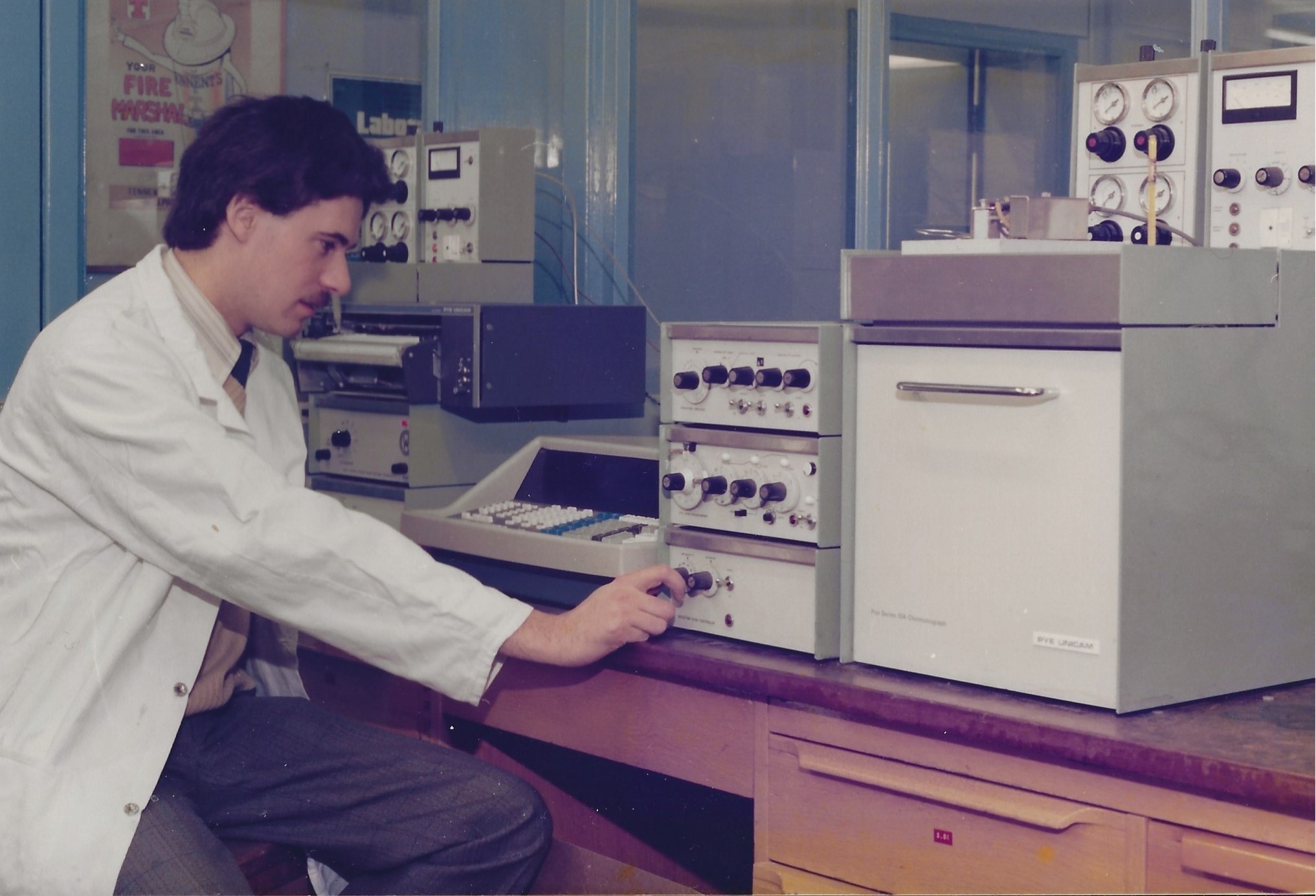
7. Last Runnings
![]() Belhaven SBAA Visit Thursday 27th April Mini-Bus – Those attending should have received an email confirming the mini-bus departure place and time. As the Chairman mentioned we have a couple if spaces still available for the visit however, if you wish to attend this, members only event, or have any queries regarding the mini-bus please contact the secretary.
Belhaven SBAA Visit Thursday 27th April Mini-Bus – Those attending should have received an email confirming the mini-bus departure place and time. As the Chairman mentioned we have a couple if spaces still available for the visit however, if you wish to attend this, members only event, or have any queries regarding the mini-bus please contact the secretary.
![]() A warm welcome to new members Paul Hathaway from Argyll, Elspeth McLean and Michael Tasker both from Edinburgh.
A warm welcome to new members Paul Hathaway from Argyll, Elspeth McLean and Michael Tasker both from Edinburgh.
![]() Thanks to Graeme Cruickshank for this note, In the wake of the Scotch Ale special Journal (No. 22), here’s another example to add to the list. Barney’s Beer, produced at Summerhall Brewery in Edinburgh, make a Scotch Ale called ‘Ol’ Seamus’, named after the company’s first dog (breed unspecified). It weighs in at a tasty 7.4% abv.
Thanks to Graeme Cruickshank for this note, In the wake of the Scotch Ale special Journal (No. 22), here’s another example to add to the list. Barney’s Beer, produced at Summerhall Brewery in Edinburgh, make a Scotch Ale called ‘Ol’ Seamus’, named after the company’s first dog (breed unspecified). It weighs in at a tasty 7.4% abv.
![]() We also got some feedback from John Reade on the Aitken’s labels reported in the January Newsletter , hopefully we’ll cover in a future newsletter.
We also got some feedback from John Reade on the Aitken’s labels reported in the January Newsletter , hopefully we’ll cover in a future newsletter.
Correspondence to the SBAA Secretary ivor.reid@sky.com
SBAA Newsletter No. 55 – April 2023
